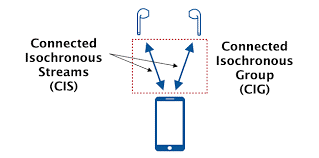Over the last number of years, the Bluetooth® SIG (Special Interest Group) has spent significant effort on enhancing the Low Energy specification to go far beyond what it was originally designed for. Since its introduction in Bluetooth 4.0 in 2009, the Low Energy (LE) mode of operation was always targeting low power, battery-driven IoT devices. Product makers used it for all kinds of devices, but the main drive came from the wearables market and connection to the all-present smartphone.
In 2016, Bluetooth LE got its arguably most important update with the release of the 5.0 specification. Shortcomings of Bluetooth LE versus its “big brother” Bluetooth Classic (also called BR/EDR) in the domain of data throughput were addressed with two new features: the high-speed PHY mode providing up to 2Mbps (double of the original Bluetooth LE PHY capability) and the Extended Advertising mode which allows more data bytes to be put into a single advertising packet. Additionally, emerging use cases in industrial and smart home applications made it necessary to connect between devices that are much further apart than the usual wearable scenario. To help in this case, the SIG added the Coded PHY which uses error correction codes to allow for longer transmission ranges with the trade-off of lower speed. In parallel, the SIG also worked on Mesh networking. Although not part of the core Bluetooth specification, Mesh became one of the main drivers for adoption of Bluetooth LE in smart home applications.
The next two releases of the Bluetooth core specification turned their attention to specific use cases instead of more general performance enhancements. Bluetooth 5.1, released in 2019, added direction finding functionality to the Low Energy specification. Being able to calculate the Angle of Arrival (AoA) of a received packet – or providing the Angle of Departure (AoD) in the packet – allows devices to better identify where the communication partner is located, thus enabling new applications for Bluetooth LE in areas such as navigation or tracking. In January 2020, the Bluetooth SIG released the 5.2 specification with the main new feature of Isochronous Channels. Behind this technical term is the idea of stereo audio transmission over a Bluetooth LE link. Being mainly driven by hearing aid and headphone use cases, this new feature finally addressed one big gap between Bluetooth LE and BR/EDR: audio transmission.

On July 13, 2021, the Bluetooth SIG announced its latest core specification update, the 5.3 version. Compared to the previous releases, this one seems to be more of an evolution than a revolution. However, the included enhancements are very important building blocks for better device performance, including:
- Updates to the periodic advertising process now allow receivers to filter out messages earlier (i.e. in the Controller stack without involving the Host stack) and thus improve the receiver duty cycling
- Peripheral devices can now also provide their list of preferred channels to a central device to improve throughput and reliability where previously the channel classification was only controllable from the central device
- The addition of so called sub-rated connections improves the switching time between low and high duty cycle connections for applications that mostly use minimal communication but sometimes need to switch to burst traffic
While the Bluetooth 5.3 specification may not seem like a huge leap, these enhancements are important additions to improve device performance, user experience and, of course, power consumption. In order to let product developers – and finally users – benefit from all the Bluetooth SIG’s enhancements, Renesas is providing full feature set implementations of Bluetooth 5.0 now and will soon also offer support for all new features added up to Bluetooth 5.3 in the next-generation of its products.
For a look at the current Bluetooth LE product portfolio, visit renesas.com/ble. And watch this space for more development news coming soon from Renesas
